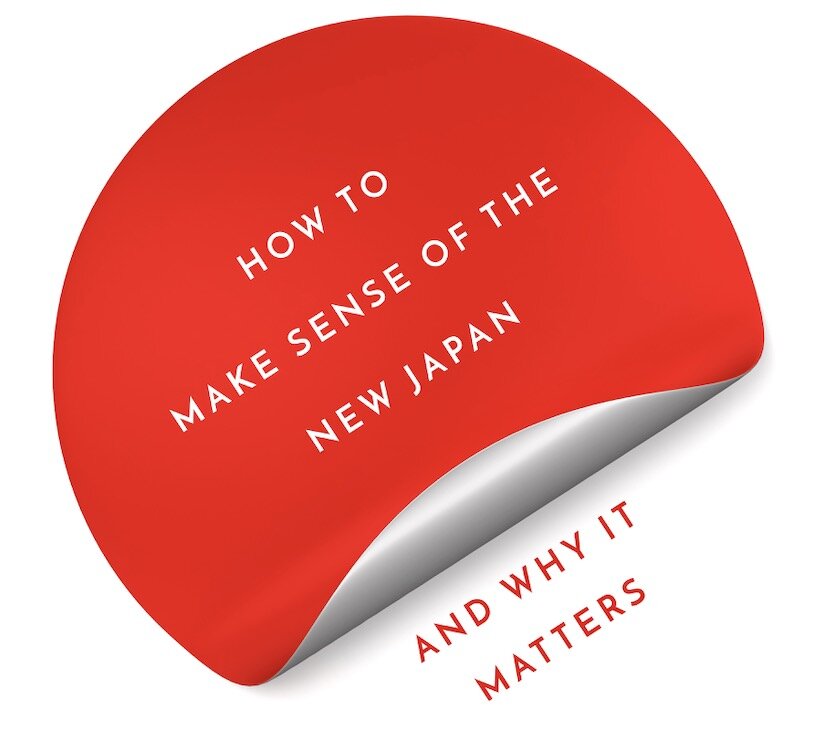Nikkei Asian Review Op-ed: How to spur innovation after COVID-19
The answer may lie in bringing employees around a virtual water cooler
Continuous virtual rooms could be more diverse and random than physical proximity. (Photo by Akikazu Ishii)
Robert Feldman is a professor at the Tokyo University of Science, and a senior adviser at Morgan Stanley MUFG Securities. Ulrike Schaede is a professor at the University of California San Diego.
This op-ed piece was first run by the Nikkei Asian Review, August 28, 2020. It is reposted here with permission.
Peter Fasolo, Johnson & Johnson's chief of human resources, spoke for many senior managers in a recent address to the company's employees. "When it is safe to do so, we want you to return to the workplace," Fasolo said. "We believe collaboration and innovation is fueled in large part by the connections of people."
Yet, it is quite likely that some telework will continue even after this pandemic is over. As we learn more about the new constraints and opportunities of telework, now is the time for managers to think about creating new ways of fostering virtual collaboration and innovation among employees.
We have long known that a key ingredient to innovation is serendipity: chance encounters by people with ideas that bring about inventions, discoveries and products. Serendipity is greatly helped by physical proximity — such as when people randomly run into each other at the proverbial company water cooler. Research on clusters has shown that innovation thrives with random run-ins of people, capital and ideas. As working from home greatly truncates such chance encounters, the question becomes: how can we create serendipity in a world with much less physical proximity? And what would a "virtual water cooler" look like?
Ironically, a hint may come from COVID-19. Professor Adam Kucharski from the London School of Hygiene and Tropical Medicine, has developed the "DOTS" model of disease contagion. In this model, the reproduction rate — the number of people whom a carrier infects — is the product of four factors. "D," duration, is the number of days that a carrier is infectious. "O", the opportunity to spread, measures the number of daily encounters the carrier has with other people. "T" is the transmission probability, the likelihood that another person is infected. "S" is susceptibility, the likelihood that an infected susceptible person catches the disease.
We posit that this DOTS model can also be applied to innovation, where the "carrier" is a person with an idea. Accordingly, we apply the following definitions to Kucharski's model. "Duration" is the time window during which an idea is fresh. "Opportunity" is the number of encounters per day in the idea window. "Transmission" is the probability that an idea is picked up, and "S" stands for "success," or the probability that an idea is acted on.
The first two elements of the model — duration and opportunity — depend on a particular individual's focus and opportunity to spend time on creating new ideas, and then to ramble about with these ideas while they are fresh. Employers can enable this by affording people the time and opportunity to innovate and find an audience.
To increase the transmission and success of ideas, the target audiences will need encouragement to listen. One way to raise the odds of online idea contagion is to create an online "work-time, nonwork" space. This should be open 24/7, for employees to come and go at any time, for any reason. Time spent at the virtual water cooler should count as work, even though it is also a place to chat, gossip, vent, or seek collegiality. Yes, employee time is costly, but benefits can be large.
Serendipity is helped by physical proximity such as when people run into each other at the company water cooler. © Getty Images
Some variants of this already exist, with many companies around the world launching a daily virtual Happy Hour where their employees can get together and chat. Our virtual water cooler idea is different in that it not only creates virtual proximity but aims to raise serendipity, including across organizational silos. This is why it should be open 24/7, and why there needs to be proactive incentives to participate.
In the world of yesteryear, food was the go-to bait that brought employees together. In the virtual world, we will have to become more creative. Perhaps listeners can be rewarded, such as by collecting points toward a prize, or by pushing a "send me a brownie" button. Some rules of engagement will also be necessary — such as not hogging airtime. Over time, best practices will crystallize, including the ideal group size and how to avoid overcrowding.
If done right, continuous virtual rooms could be even more diverse and random than physical proximity. This is because deep learning offers new avenues to raise the odds of idea contagion. For example, employers could start by randomly assigning people to "go to the water cooler." Matched participants would then assess their interaction with "likes" that can be correlated with (anonymous) user characteristics, to suggest subsequent matches. Over time, the algorithm can find the degree of randomness that maximizes serendipity. Of course, companies must avoid some pitfalls, such as echo chambers or making employees feel like guinea pigs. But the sky's the limit for innovation matchmaking.
Crisis offers an opportunity for innovation. We now have the chance to be innovative about innovation and design a new workplace culture, based on novel ways to enhance serendipity without proximity.


